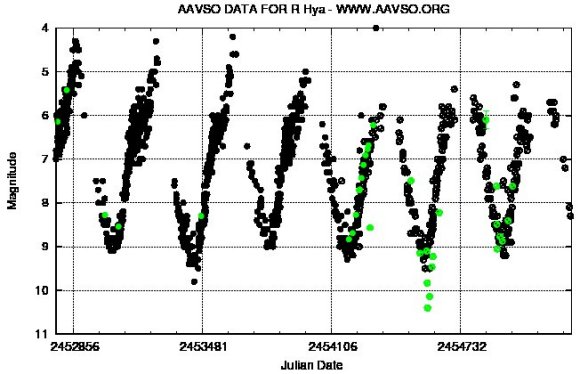
 |
Twenty-five hundred days in the life of the Mira variable R Hydrae shows it varying between visual magnitudes 5 and 9 over a 388-day period, the size of the variation itself subject to multi-year semi-periodic change. The Julian Date is a running number of days since January 1, 4713 BC of the Julian calendar. JD 2452856 is August 4, 2003, JD 2454732 September 22, 2008. The black dots are visual estimates, the green ones photometric data. On rare occasion the star may hit magnitude 4; catalogues suggest even magnitude 3. Courtesy of the American Association of Variable Star Observers, AAVSO, the data contributed by observers worldwide. |